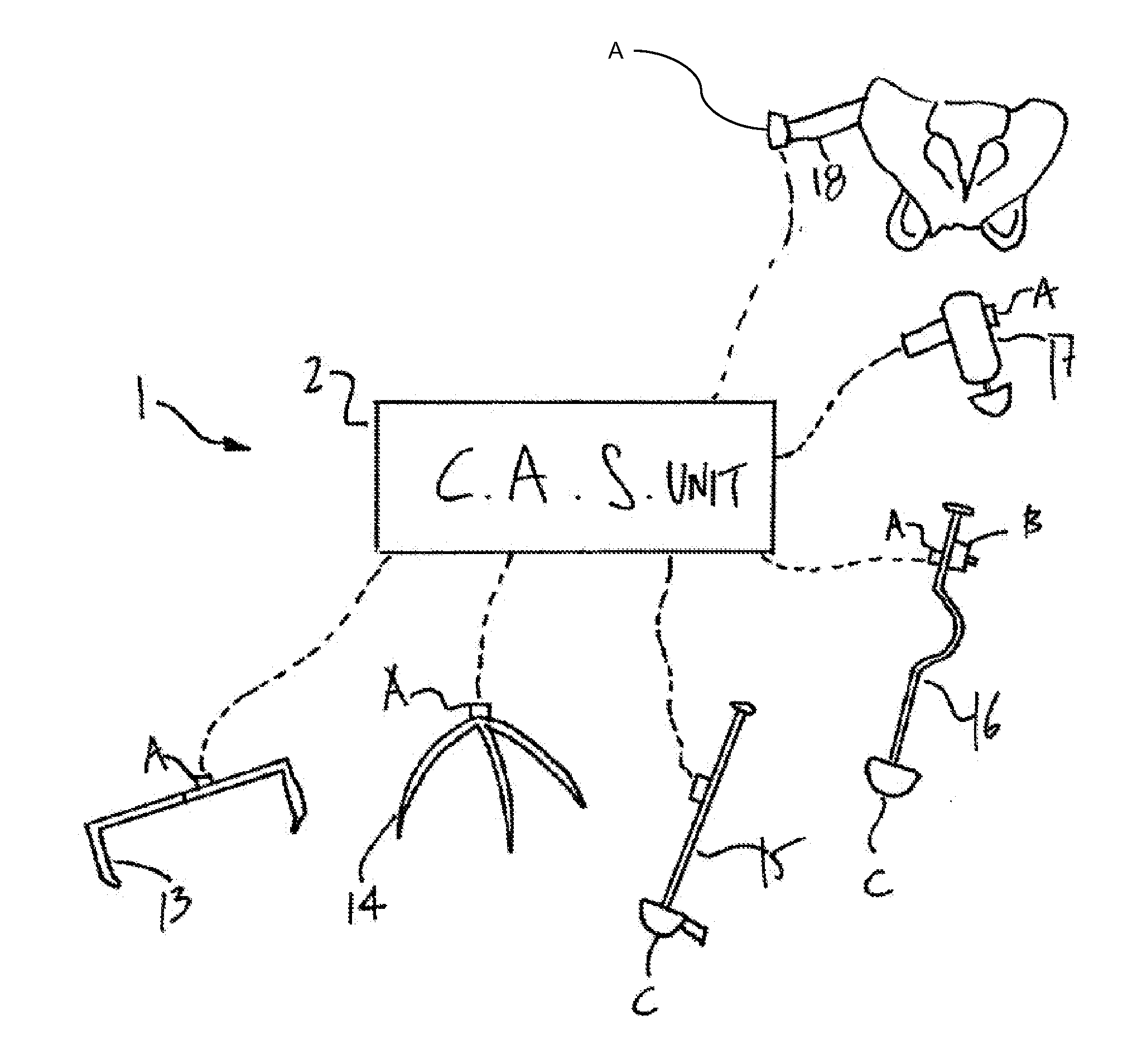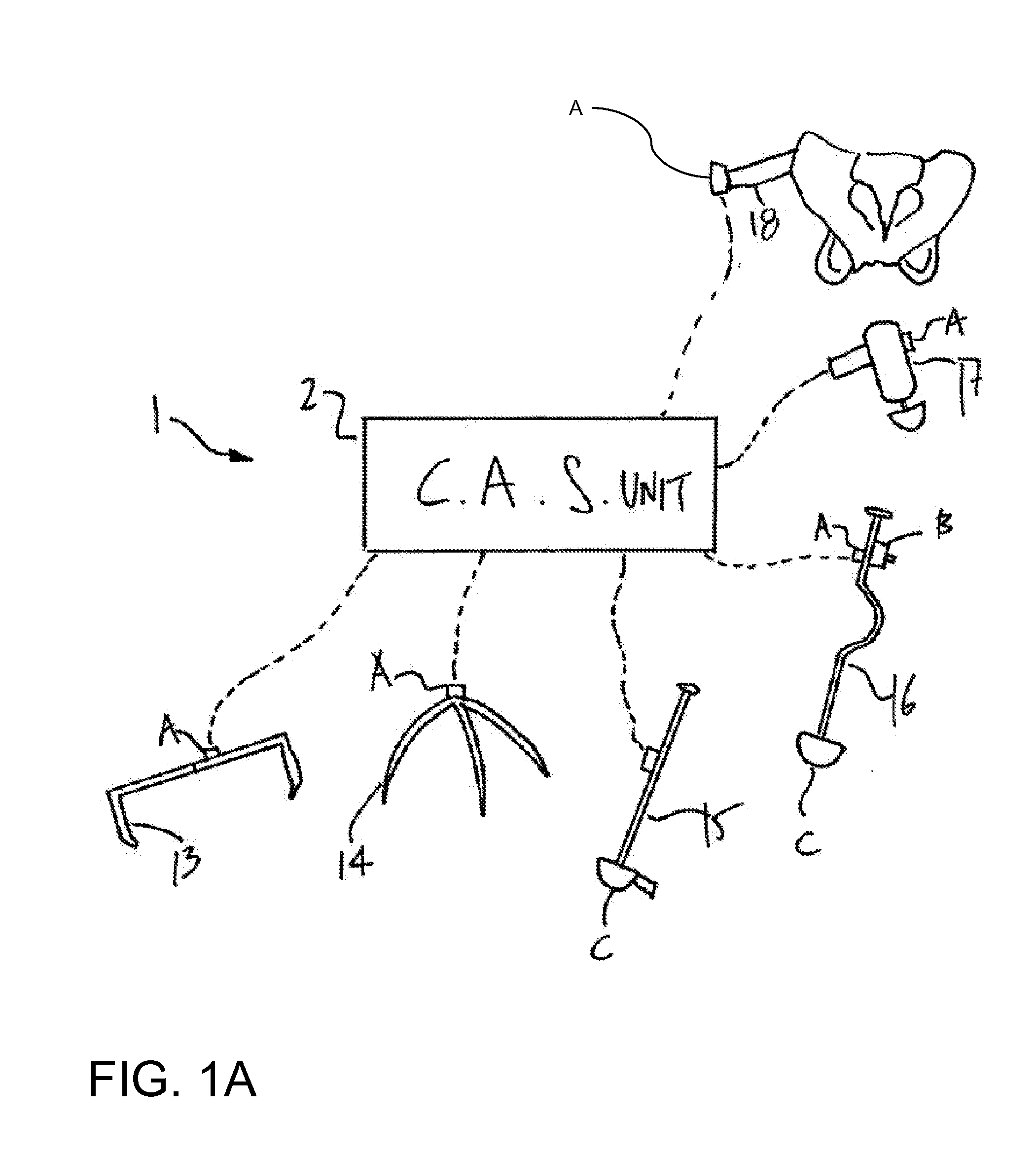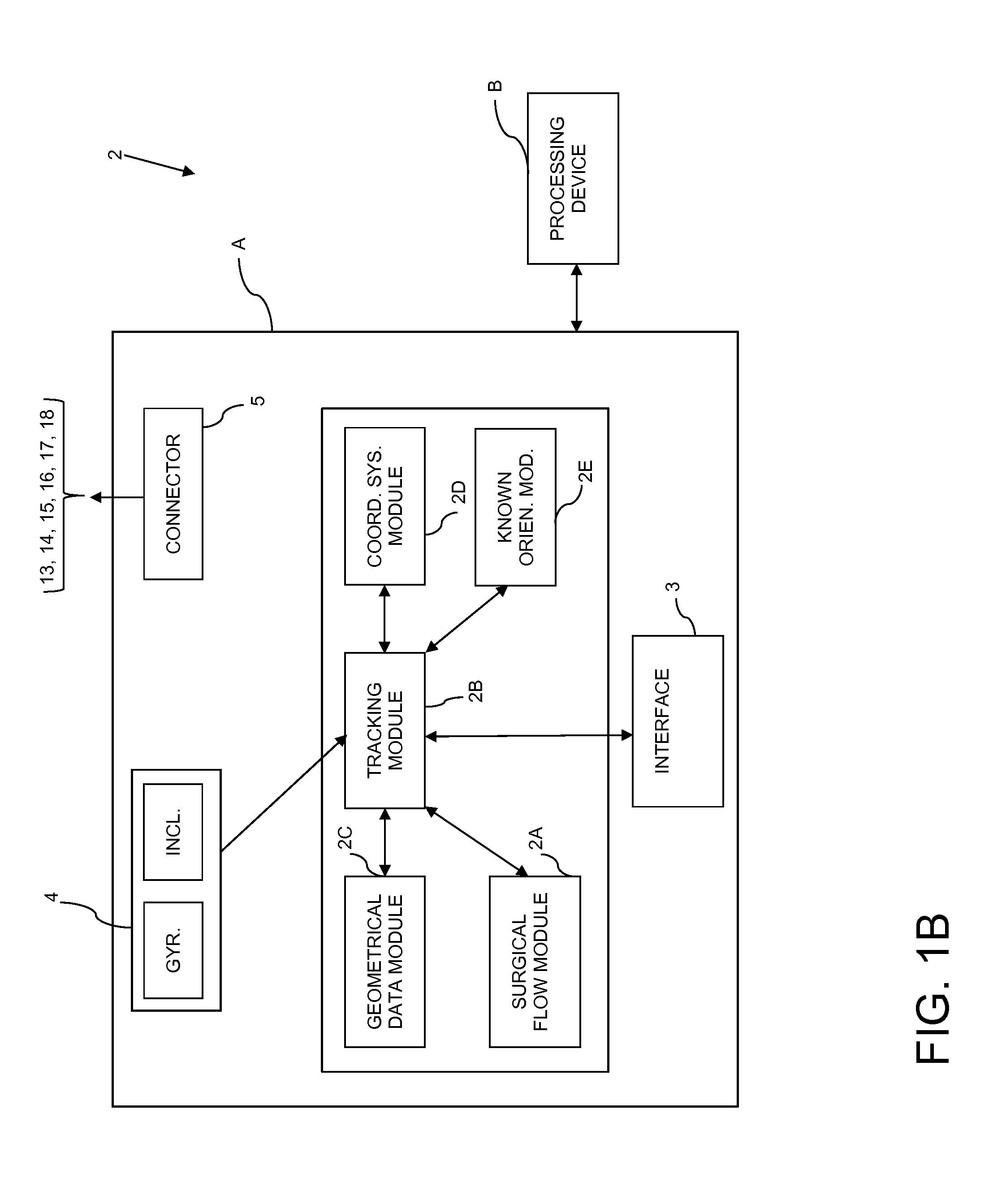Instrument navigation in computer-assisted hip surgery
a hip surgery and computer-aided technology, applied in the direction of instruments, prostheses, applications, etc., can solve the problems of loss of movement, premature wear of implant components, and/or improper gait, and achieve the effect of cost effectiveness
- Summary
- Abstract
- Description
- Claims
- Application Information
AI Technical Summary
Benefits of technology
Problems solved by technology
Method used
Image
Examples
Embodiment Construction
[0031]Referring to the drawings and more particularly to FIG. 2, a method for navigating an instrument in computer-assisted hip surgery is generally shown at 10. The purpose of method 10 is to accurately navigate surgical instruments used in hip arthroplasty or like procedures, such as an acetabular reamer, a cup impactor, an impactor guiding pin, using inertial sensors. By navigating instruments, the present disclosure refers to the process of providing orientation data relating an instrument to a bone, to guide an operator in performing surgical maneuvers of the instrument relative to the bone.
[0032]Referring to FIG. 1A, a system for navigating instruments in computer-assisted hip surgery is generally shown at 1, and is of the type used to implement the method 10, as will be detailed below. The system 1 comprises a computer-assisted surgery (CAS) processing unit 2, shown as a stand-alone unit in FIG. 1. It is however pointed out that the CAS processing unit 2 may be integrated int...
PUM
 Login to View More
Login to View More Abstract
Description
Claims
Application Information
 Login to View More
Login to View More - R&D
- Intellectual Property
- Life Sciences
- Materials
- Tech Scout
- Unparalleled Data Quality
- Higher Quality Content
- 60% Fewer Hallucinations
Browse by: Latest US Patents, China's latest patents, Technical Efficacy Thesaurus, Application Domain, Technology Topic, Popular Technical Reports.
© 2025 PatSnap. All rights reserved.Legal|Privacy policy|Modern Slavery Act Transparency Statement|Sitemap|About US| Contact US: help@patsnap.com



